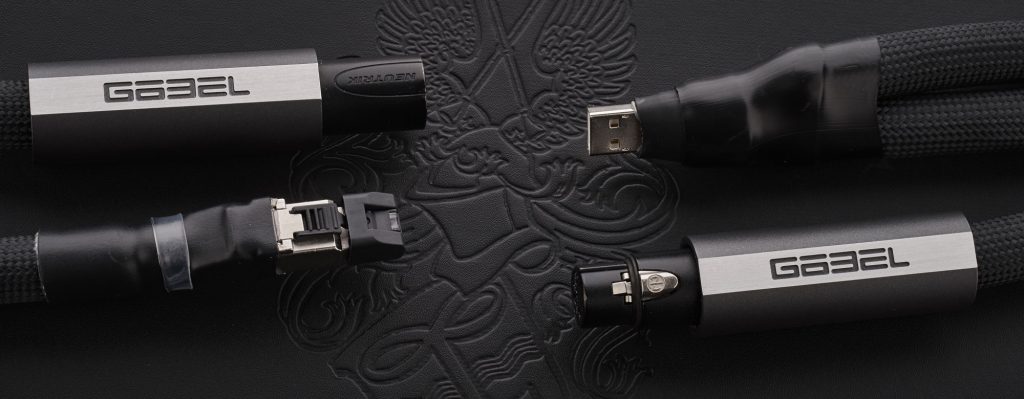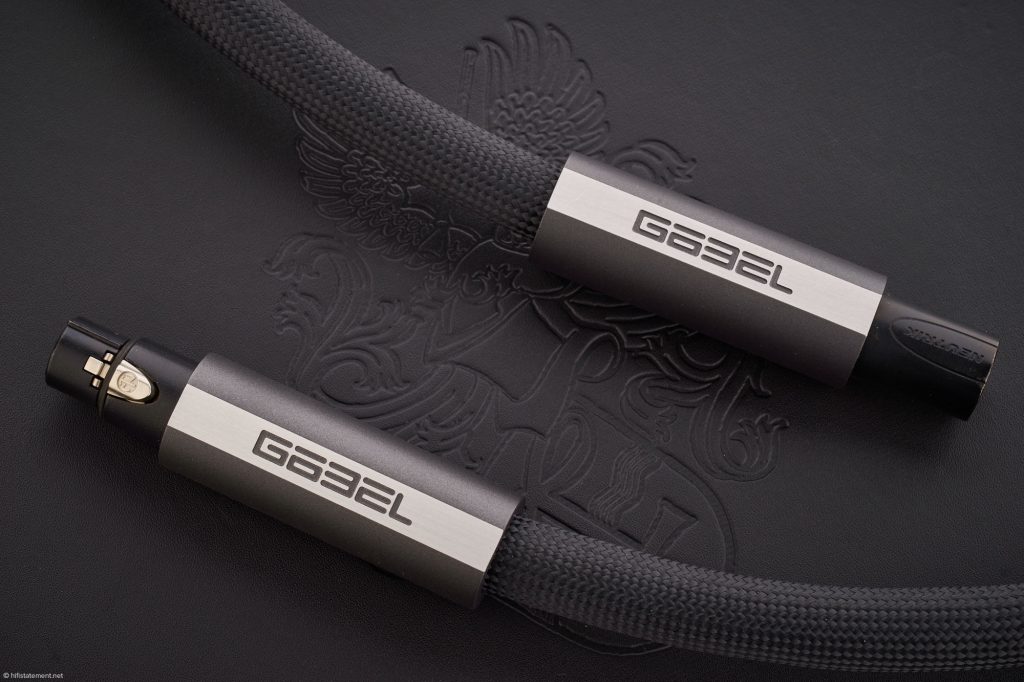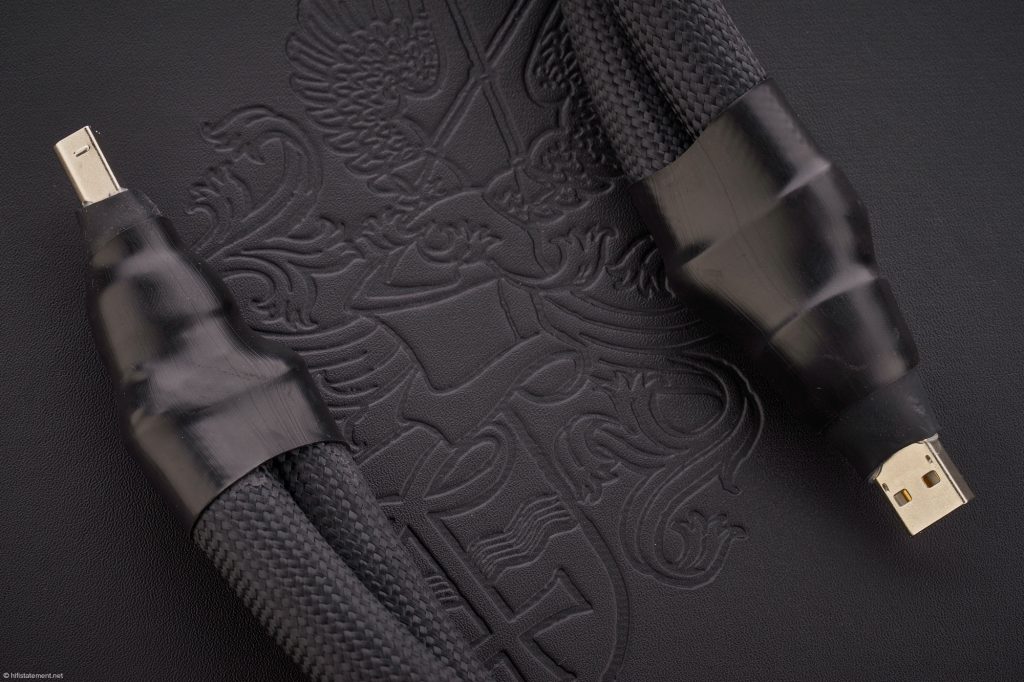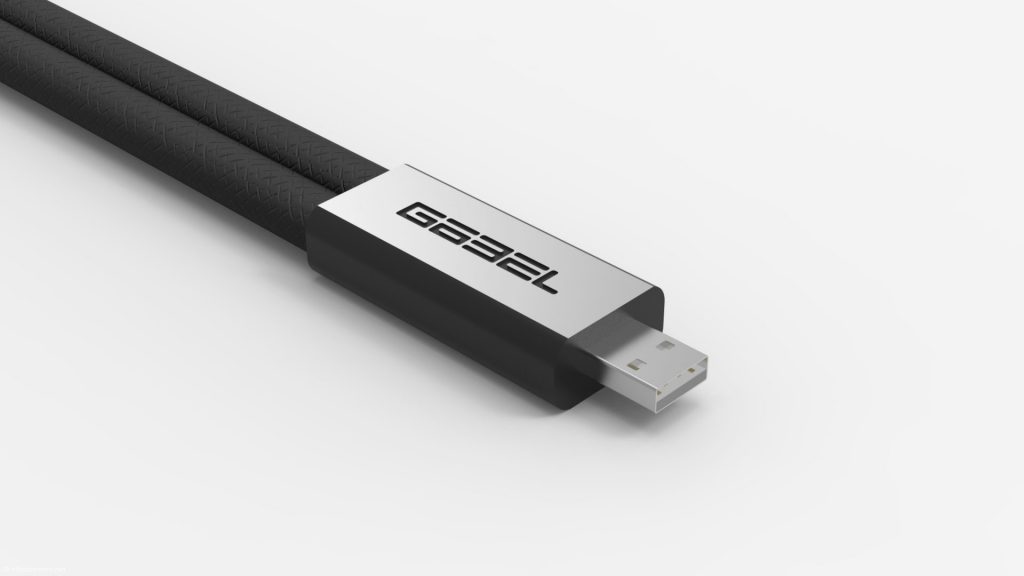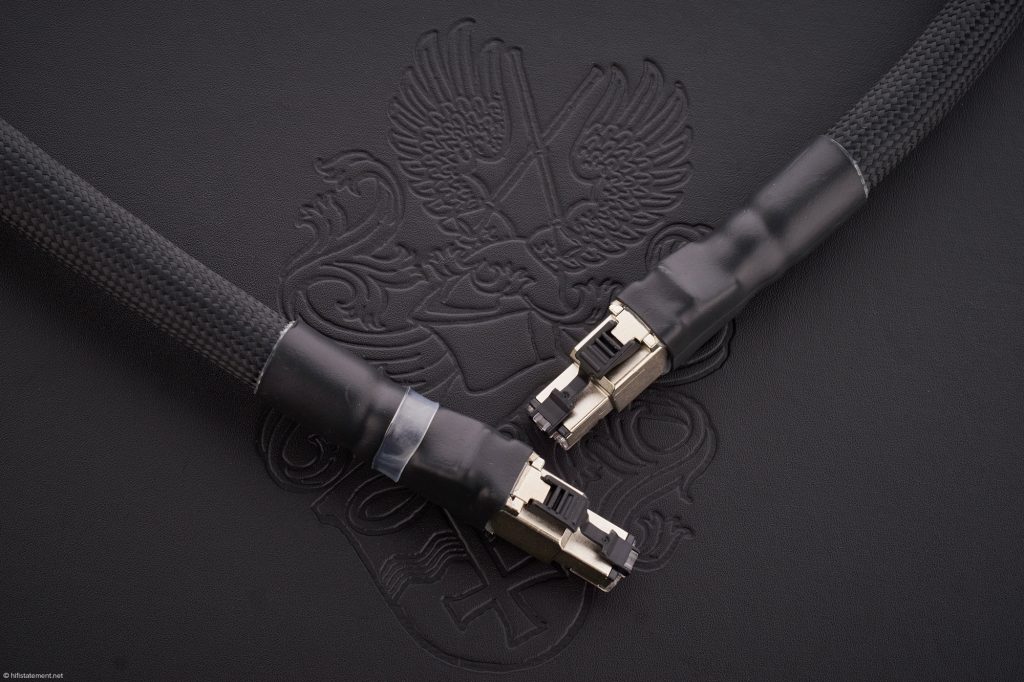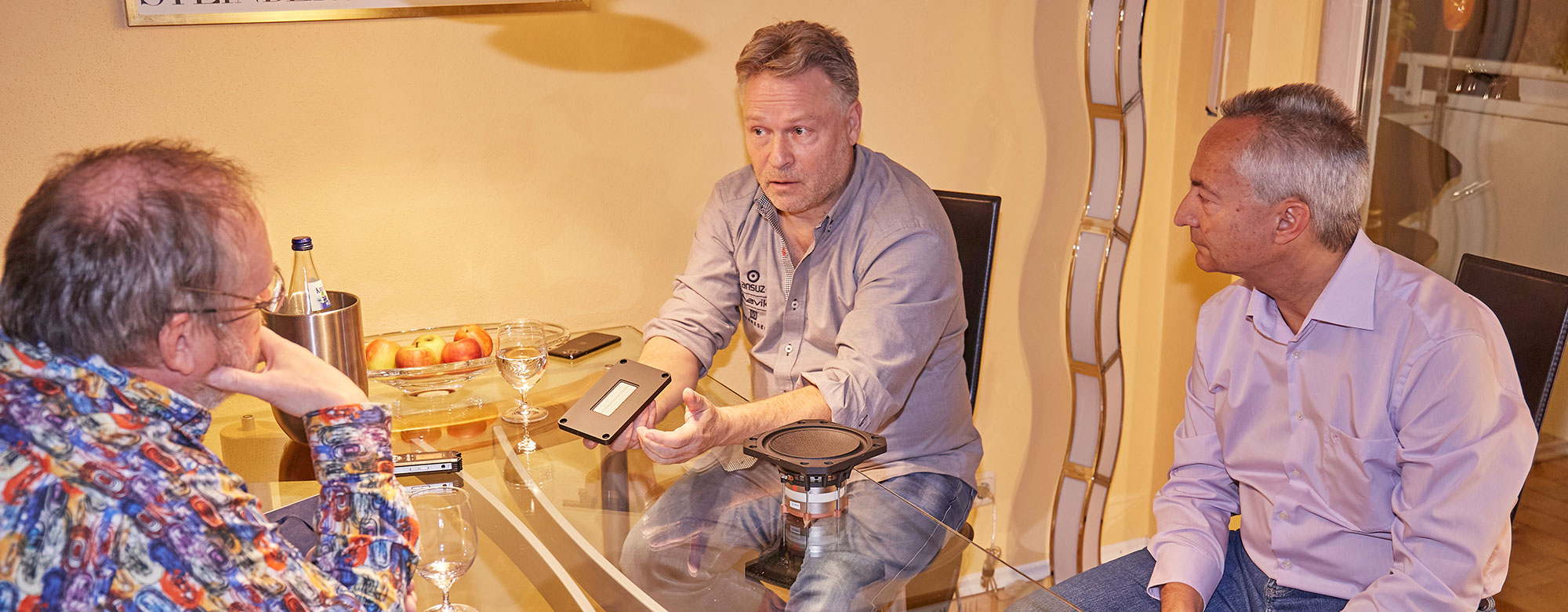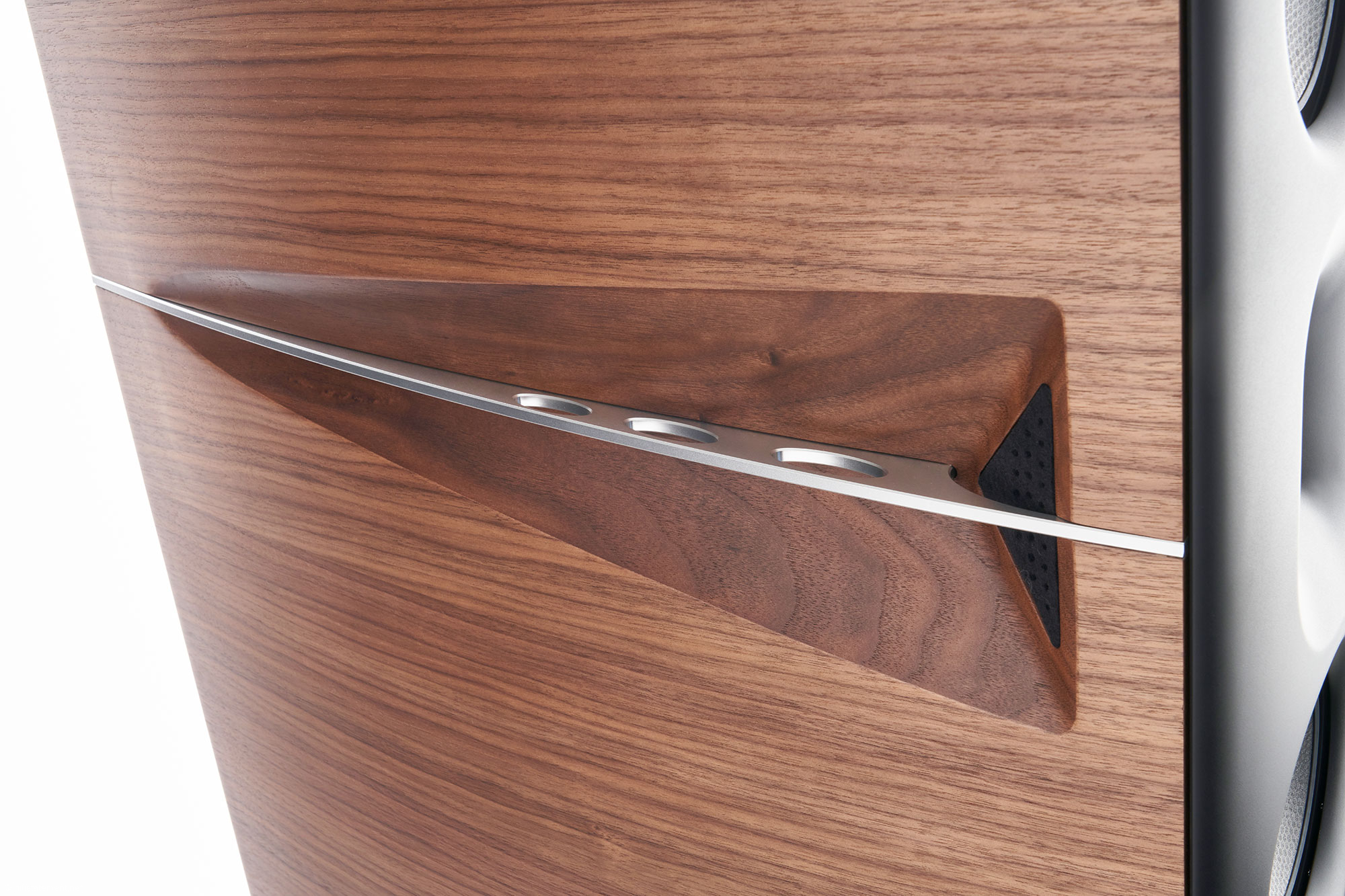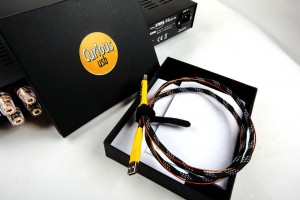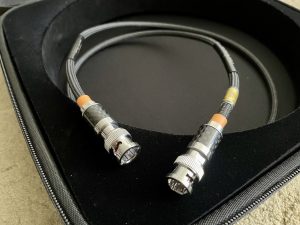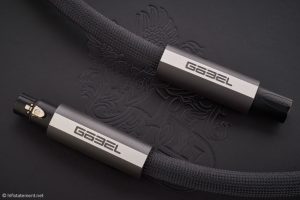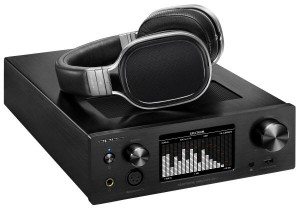I really couldn't resist the splendid speaker and interconnect cables from Göbel Audio. To be on the safe side I therefore listened only briefly to the power cables, but exchanged them before I got used to it. However, the most recent digital cables I cannot hide from you—and really don't want to—despite this being a quite dangerous endeavour... the Göbel High-End Lacorde Statement Digital cables.
The good thing—or the bad thing, depending on how you see it—is that Oliver Göbel's facilities and my listening room are not very far away from each other. When the system in his demo room undergoes an interesting sonic modification, or when a particularly enthralling test object or a new acquisition enter my premises, both of us quickly can drop by each other's place. And sometimes also, one or the other component changes place into the colleague's listening room, in order to show its capabilities in the respective chain. Yet some time ago it happened that I got an AES/EBU cable, which is still waiting for a review as I didn't have a compelling application for this type of digital connection so far. During a comparison test of preamps and NAS systems in Oliver Göbel's company, located nearby in the Bavarian town of Alling, he mentioned that he was currently working on USB and Ethernet cables. And I couldn't await listening to these wires in my system—as well as testing them, of course. Eventually, I was able to persuade the designer to hand in a prototype of each of the cables for a first impression, which namely could be different from the serial versions in terms of termination and probably also outer diameter, but not in their sonic characteristics.
The AES/EBU cable is labeled Göbel Digital XLR and is externally not distinguishable from a balanced interconnect cable.
The prototypes' connectors still lacked the characteristic aluminum sleeve with the milled company logo on them, using a simple shrink tube here instead. Also, the USB cable's parallel running power and data wires are projected to be a good bit thinner in the final version, but—as aforementioned—this is of a purely cosmetic nature. Even if the outer jackets of the Ethernet, USB and AES/EBU cables look almost exactly the same as those of the interconnect cables, they host a different number of conductors in different geometric layouts. For example, four shielded conductor pairs are required for the Ethernet connection and 110 Ohms are mandatory as impedance for an AES/EBU application. It is therefore not the case that Oliver Göbel simply transferred the knowledge gained during the development of the speaker and interconnect cables to the new cables, even though some fundamental insights were useful for the new designs.
As it happens with most cable manufacturers, there is not much more you get to know about the build processes. Oliver Göbel only pointed out that the high price of his cables results mainly from the handcraft required in the production, and is not caused by the processing of exotic materials. The price debate which is so popular with cables I would rather leave open to you and me here: One simply has to know for himself if the few remaining percent on the way to more musical performance will be worth it. Above a certain (high) level, significant improvements are only achievable by superimposing extreme efforts—whether this is with components or with cables.
The USB cable uses physically separated wiring for power and data. In the prototype, a shrink tube conceals the connection to the plug.
Plugging the USB prototype cable into the Aries Femto and the Chord DAVE, you really could get scared out of your mind thinking about the stress on the sockets. Not to fear, though. First, they defied any kind of damage during the test's frequent changeovers, and second, the USB cable's two "tubes" will become more delicate in the serial version. Even if previously the outstanding Habst Ultra III took care of the connection between streaming bridge and converter, you easily could become aware of the Lacorde Statement's sonic advantages—and this without resorting to any distinguished piece of music. My tablet PC disclosed a pop music production which I hadn't heard for years, Vaya Con Dios' album Night Owls. Already the hit single "Nah Neh Nah" showed the Lacorde Statement's capability for a larger, clearer structured image. The background singers were surrounded by a little more reverb, and the track rendered rhythmically more compelling. There was no need to connect the slightly bulky cable back and forth several times to fully convince me regarding the sound qualities of the Göbel USB cable—despite the Habst Ultra III having turned up as the fulfillment of a cable dream not quite a long time ago. Let aside its really excellent sound performance, but better is the enemy of very good as well. And the Lacorde Statement clearly deserves the designation “better,” but with regard to price it unfortunately plays also in a completely different league.
This is how the cable will look. This is not a photo, but a simulation from the computer. The two cables in parallel appear much thinner compared to the prototype.
In the already mentioned comparison, I only exchanged—and this as it should be—the Habst with the Göbel cable, which meant that Audioquest's Jitterbug between the Aries and the USB cable remained in place: In combination with the Habst cable, this configuration was simply the most persuasive one sonically. However, this didn't necessarily have to apply to the Lacorde Statement as well. So I removed the Jitterbug from the signal path—and put it back after only one song. The investment in a Göbel USB cable doesn't preclude a Jitterbug at all. It remains an indispensable component within the chain.
Almost as anxious as I was on the USB cable, I very much looked forward to the Ethernet cable. In the present I use the Audioquest Carbon and the Cardas Audio Network Clear on the long distance between the router and the Melco. Oliver Göbel is not going to offer cables in this length. Due to the complex manufacturing process, he will probably limit the length to a maximum of three meters. The prototype measured only one meter, and could therefore only be used between the Melco and the Aries Femto. Here I sometimes use a Network Clear, but more often the Audioquest Diamond. Although, for example, I did not change the long cable to the router during the testing of the Cardas Clear and changed the short cable only, already this cable exchange alone brought considerable and comprehensible alterations. But, I didn't expect there to be as much improvement as with the Lacorde Statement USB. Nevertheless, I left audiophile test songs aside and went back to Night Owls. Already, less than 30 seconds later, it was clear that I had fostered false expectations: The exchange of the Lacorde Ethernet was actually a lot more noticeable than the exchange of the Lacorde USB against the Habst. Variations in fine dynamics, nuances in articulation, and rhythmic accents were even more emphasized. If I had to choose between the two Lacordes, I certainly would go for the Ethernet version. It is unbelievable how much more sonic pleasure you can get out of this single meter of cable within a high-resolution chain!
The Ethernet cable prototype already comes equipped with connectors from Telegärtner.
Before occupying myself with the Lacorde Statement Digital XLR, my colleague Roland Dietl put a Mutec MC-3 + Smart Clock USB at my disposal during his vacation. He had been already experimenting with the Reclocker and was quite impressed with its effect in his system. A respective test will follow in a few weeks. I presume that I do not anticipate too much when I reveal that in my chain the Mutec inserted between Melco, Auralic Femto, Audioquest Jitterbug and Chord DAVE did have an effect, but not one that could be described as clearly positive: It made the sonic image appear brighter and thus a touch more open. The tonal colours became somewhat paler and the lows felt a little less solid. Although my experiences usually say that in the digital sector the shortest signal path not always is the best, the before-described component arrangement overshot the objective quite a bit. That's why I tried the Mutec between the USB output of the Melco and the DAVE—starting with a Sunwire Digisym Reference between the Mutec and the DAVE. There really was no need to listen twice: The Reclocker offered so much openness, so much air around the instruments and so much musical enthusiasm, that one could almost think having a higher-classed converter in play. In this type of configuration I do not want to miss the Mutec any more.
This picture shows how the Lacorde Statement Ethernet will look.
The Digisym has been highly valued for decades, but when it was replaced with the Lacorde Statement Digital XLR for taking over the data transfer, the spatiality within the Keith Jarrett Trio's "Wrong Blues" opened up a little more, while the cymbals sparkled a bit more colourfully, and the rhythm's groove got a bit more intense. Here too, the Göbel Lacorde Statement proved to be clearly superior, and yet the sonic advantages of the Ethernet cable did impress me the most in this top-class trio of digital cables.
STATEMENT
Sadly, I really don't know how Oliver Göbel manages to do this, but I, as well as my visitors and my colleagues, clearly could hear it. Up to this point, any of the Lacorde Statement cables have definitely left my previous favorites behind by a wide margin. And this happens also to the cables designed for the digital data transfer. If you have the money to invest within this price level and you require more than one of these magic cords, then get started with the Ethernet cable: Among these sonically outstanding cables, this is the primus inter pares!
LISTENING EQUIPMENT
- NAS: Melco N1ZH60, WD MyCloud.
- Streaming Bridge: Auralic Aries Femto w/SBooster BOTW P&P Eco.
- Reclocker: Mutec MC-3+ Smart Clock USB.
- D/A converter: Chord DAVE.
- Preamplifier: Einstein The Preamp.
- Amplifier: Ayon Epsilon w/KT150, PS Audio BHK Signature 300 Amplifier.
- Loudspeakers: Kaiser Acoustics Kawero! Classic, LumenWhite DiamondLight.
- Cables: HMS Gran Finale Jubilee, Swiss Cables Reference Plus, Goebel High End Lacorde Statement, Habst Ultra III, Audioquest Diamond, Carbon and Jitterbug, Cardas Audio Clear Network, Sunwire Digisym Reference.
- Accessories: PS Audio Power Regenerator P5, Sun Leiste, Audioplan Powerstar, HMS wall sockets, Acapella Bases, Acoustic System Resonators, Finite Elemente Cerabase, Harmonix Real Focus and Room Tuning Disks, Audio Exklusiv Silentplugs, Artesania Audio Exoteryc.
Göbel High End Lacorde Statement Digital XLR
Length: 1 x 1,2m
Price: 3000 Euros, each additional 40cm 700 Euros
Göbel High End Lacorde Statement USB
Length: 1 x 1,2m
Price: 4500 Euros, each additional 40cm 800 Euros
Göbel High End Lacorde Statement Ethernet
Length: 1 x 1,2m
Price: 4500 Euros, each additional 40cm 800 Euros
Göbel High End
Schabweg 4a
82239 Alling
Germany
+49 8141 2255887
Photographs courtesy of Göbel




